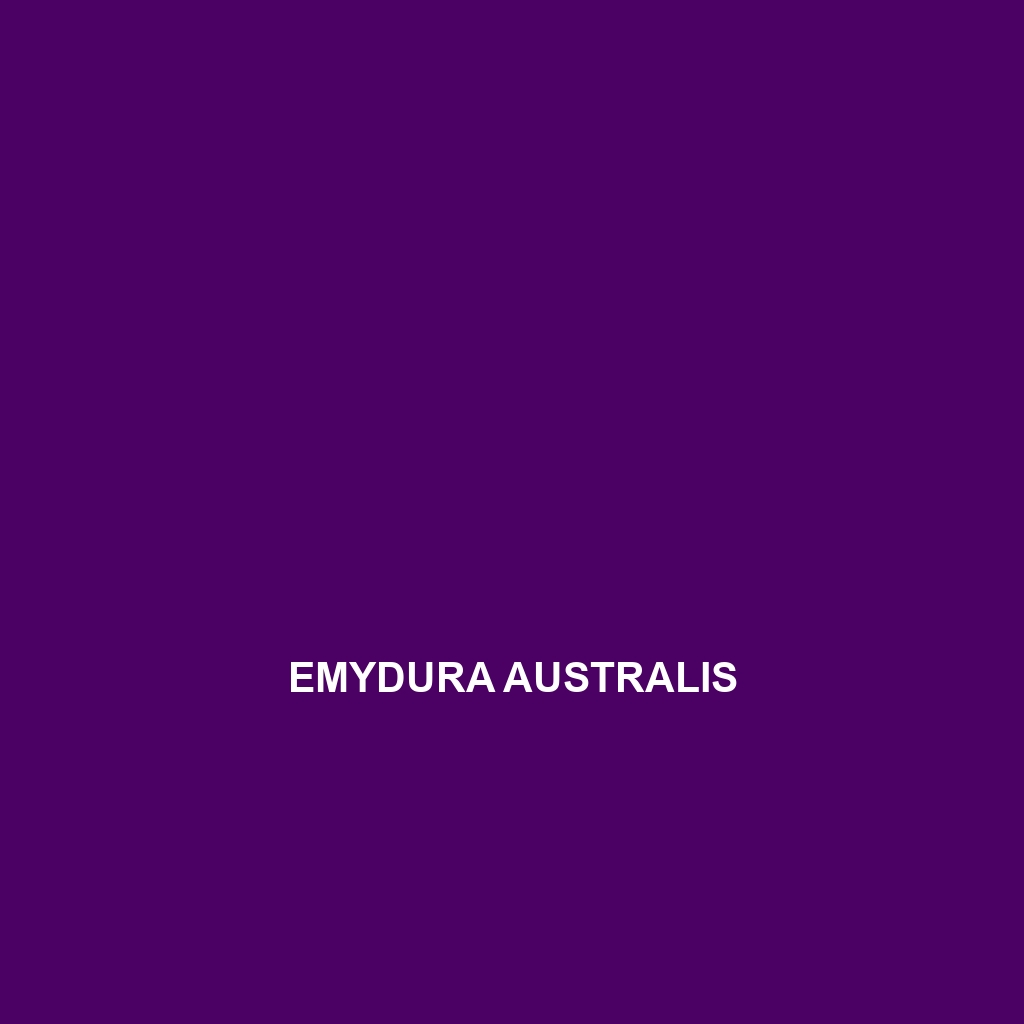Common Name
Emydura australis
Scientific Name
Emydura australis
Habitat
Emydura australis, commonly known as the Australian freshwater turtle, primarily inhabits a diverse range of environments across the eastern and northern regions of Australia. They are predominantly found in freshwater systems such as rivers, lakes, and billabongs, often surrounded by lush vegetative covers like reeds and aquatic plants. These habitats thrive in climates varying from tropical rainforests in the north to subtropical and temperate regions further south. The turtles prefer areas with calm waters that provide ample basking spots and access to submerged flora, which plays a crucial role in their ecology and daily activities.
Physical Characteristics
Emydura australis exhibits distinct physical traits that make them easily recognizable. They typically range from 20 to 30 centimeters in shell length, with females tending to be larger than males. Their carapace is smooth and domed, characterized by a striking combination of dark olive green to brown colors, often adorned with subtle markings. The plastron is yellowish, offering a stark contrast, and is often punctuated with black blotches. Notably, these turtles possess long, webbed feet that aid in swimming, along with powerful claws used for climbing onto basking spots.
Behavior
In terms of behavior, Emydura australis can be quite fascinating. They are diurnal and spend their days basking on rocks or logs in the sun, which is essential for thermoregulation. During the evening, they may engage in nocturnal behaviors, often remaining submerged in their aquatic habitats. Socially, these turtles are relatively solitary but do exhibit some hierarchy when basking. In mating season, which peaks during the warmer months, males become more active, engaging in courtship displays that include head bobbing and chasing. Their unique mating rituals are particularly intriguing to observe.
Diet
Emydura australis displays omnivorous feeding habits. Their diet consists of a mix of both plant and animal matter. They primarily consume aquatic plants, such as duckweed and algae, alongside invertebrates, including snails and insects. As opportunistic feeders, they adapt their diet based on seasonal availability and water conditions. Their feeding behavior plays a vital role in maintaining the ecological balance of their habitat, as they help control aquatic vegetation and regulate invertebrate populations.
Reproduction
The reproductive cycle of Emydura australis is marked by seasonal breeding, typically occurring during spring and summer months. The female lays a clutch of 10 to 20 eggs in sandy or soft soils near the water’s edge after a courtship period. The gestation period lasts approximately 70 to 90 days, depending on environmental conditions such as temperature and humidity. Once hatched, the young turtles are independent and must navigate the challenges of their habitat without parental guidance. This solitary upbringing often results in high mortality rates among hatchlings but contributes to the population dynamics of the species.
Conservation Status
The conservation status of Emydura australis is currently classified as least concern according to the IUCN Red List. However, threats such as habitat destruction due to urban development, pollution of water bodies, and invasive species pose significant risks to their populations. Conservation efforts are underway to protect their habitats, restore ecosystems, and mitigate human impact. Engaging with local communities on the importance of preserving these turtles and their environments is essential for their long-term survival.
Interesting Facts
One interesting aspect of Emydura australis is its remarkable ability to adapt to various aquatic environments. They are known to exhibit a unique behavior of ‘head-drifting,’ where they can remain submerged for extended periods with just their nostrils above water, helping them evade predators. Additionally, these turtles possess a unique physiological trait allowing them to absorb oxygen through their cloaca, a survival adaptation that enables them to remain underwater for longer durations while foraging during feeding sessions.
Role in Ecosystem
This article is designed to be informative and engaging while employing SEO strategies such as relevant keywords related to the species, habitat, behavior, and conservation status of *Emydura australis*.
